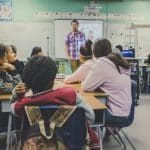Swimming is a complex sport that requires the precise coordination of numerous body parts. Improving swimming performance necessitates the enhancement of technique through continuous training and feedback. For many years, coaches and swimmers have relied on observational feedback to tweak swimming strokes. However, with the advancement in technology, real-time biomechanical feedback (BMF) systems have been introduced, and they are revolutionizing how swimmers train and improve their performance. This article will explain how these systems work and their impact on swimming technique, using scholarly sources from Google Scholar, PubMed and Crossref.
The Role of Biomechanics in Swimming
The understanding of human movement, or biomechanics, plays a crucial role in the analysis and improvement of swimming technique. Through biomechanics, the physical principles governing human motion can be applied to swimming, thereby offering insights into the stroke mechanics. An in-depth understanding of the forces involved and how they affect the swimmer’s performance can lead to the development of better training methods.
In parallel : What Are the Implications of Virtual Fans for Athlete Performance in Closed-Door Matches?
Studies published on Google Scholar and PubMed have shown that biomechanical analysis can help identify flaws and inefficiencies in swimmers’ stroke. Various sensors are used to capture movement data, which is then analyzed to provide tangible and scientifically-backed feedback to swimmers. The effectiveness of this system in improving stroke technique is evident in the many swimmers who have used it to refine their strokes and enhance their performance.
Real-Time Biomechanical Feedback Systems
A real-time biomechanical feedback system is a technology that provides instantaneous feedback about a swimmer’s stroke while they are swimming. This system uses sensors to measure various aspects of the swimming stroke, like speed, force, and direction.
Also to read : How Can Goalkeeper-Specific Plyometrics Improve Reaction Time in Football?
The sensors attached to the body of the swimmer transmit data in real-time to a computer system, which analyzes the information and provides immediate feedback. This information can be viewed on a display by the swimmer or coach, enabling them to make instant modifications to their strokes. The ability to receive and act on the feedback in real-time is a critical factor that distinguishes this system from traditional methods.
Impact of Real-Time Feedback on Training and Performance
The introduction of real-time feedback in swimming training has significant implications for swimmers’ performance. Unlike traditional training methods where feedback is given after the performance, real-time feedback allows for immediate corrections. This instant feedback is crucial in facilitating quicker learning and understanding of the correct stroke techniques.
According to studies on Google Scholar and Crossref, real-time feedback helps swimmers to understand the biomechanics of their strokes better and encourages self-correction. When swimmers can see how their movements impact their performance instantly, they are more likely to adjust their strokes to achieve the desired outcome. This active participation in the learning process not only enhances technique but also fosters a deeper understanding of the sport’s biomechanical aspects.
Application of Real-Time Feedback in Various Swimming Strokes
The application of real-time biomechanical feedback is not limited to a specific swimming stroke. Whether it’s freestyle, breaststroke, backstroke, or butterfly, this system can be used to improve any stroke. The sensors attached to the swimmer’s body can measure various parameters such as stroke rate, stroke length, and velocity, regardless of the stroke type. This versatility makes the system a valuable tool for both amateur and professional swimmers looking to enhance their performance.
Challenges and Future Directions
While real-time biomechanical feedback systems offer numerous benefits, they are not without challenges. One of the main issues is the cost of the technology, which may be prohibitive for some swimmers or swimming clubs. Furthermore, interpreting the data provided by the sensors requires a certain level of expertise.
However, with continuous advancements in technology, these challenges are expected to be overcome. Future improvements may see the development of more affordable and user-friendly sensors and software, making real-time feedback more accessible to all swimmers.
In conclusion, real-time biomechanical feedback is a powerful tool for enhancing swimming technique. By providing immediate, personalized feedback, it allows swimmers to understand and improve their strokes in a way that was not possible before. As we continue to embrace technology in sports, we can expect to see even more improvements in swimming performance.
Benefits of Real-Time BMF Systems in Enhancing Motor Skills
In the realm of swimming, real-time biomechanical feedback (BMF) systems have shown to be uniquely beneficial in enhancing motor skills. Diving into the specifics of motor skill enhancement, these systems play a pivotal role in helping swimmers to perfect their stroke technique, a critical component in the world of competitive swimming.
As per a multitude of scholarly sources including Google Scholar, Crossref, and PubMed, motor skills in swimming encompass the coordination of body movements to form a successful swim stroke. The four primary strokes, namely the front crawl, breaststroke, backstroke, and butterfly, each require a specific coordination of movements. Traditional coaching methodologies often rely on verbal or visual feedback given post-performance. However, BMF systems offer an innovative approach to learning and refining these motor skills.
Real-time BMF systems provide immediate feedback, visible in a separate window, on the swimmer’s stroke, enabling them to identify and address inefficiencies as they occur. The immediate nature of the feedback facilitates a deeper understanding of the complex biomechanics involved in each swim stroke. This immediacy is particularly beneficial in terms of motor skill acquisition, where repetition of correct movements is key to mastering a particular skill.
Moreover, the use of auditory feedback in these systems can further enhance learning and performance within the swimming domain. Auditory feedback, according to studies available on Google Scholar and Crossref PubMed, can be a powerful tool for refining the timing and rhythm of swim strokes.
Conclusion
In summary, real-time biomechanical feedback is transforming the way swimmers train and refine their technique. The instantaneous nature of the feedback underscores the advantages of BMF systems over traditional training methods. Swimmers are now able to make immediate corrections to their stroke length, stroke rate, and overall technique, leading to an enhanced understanding of biomechanics in swimming.
Despite the current challenges such as high costs and the need for expertise in data interpretation, the future for real-time BMF systems is promising. Continuous advancements in technology are anticipated to make these systems more affordable and user-friendly, enabling wider access for all swimmers.
In a sport as technical and complex as swimming, the value of real-time biomechanical feedback cannot be overstated. It empowers swimmers to optimize their performance in ways previously unattainable. As we continue to integrate technology into sports training, the frontier for performance enhancement in swimming, and indeed all sports, is set to expand exponentially.












